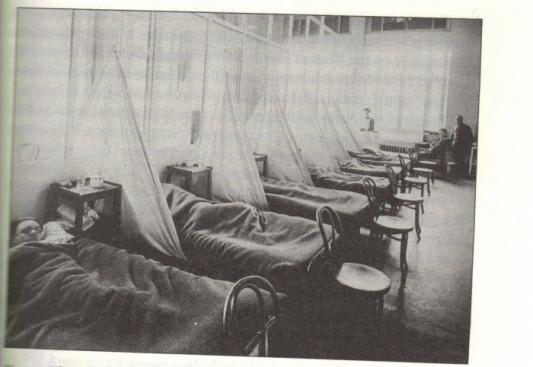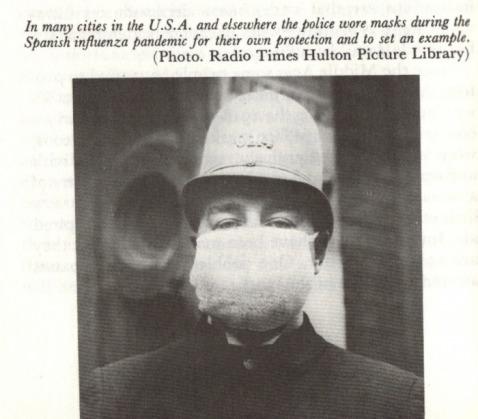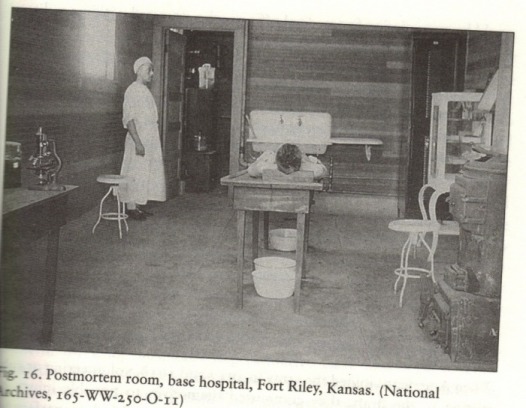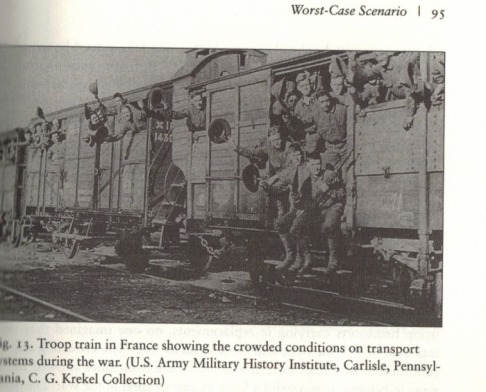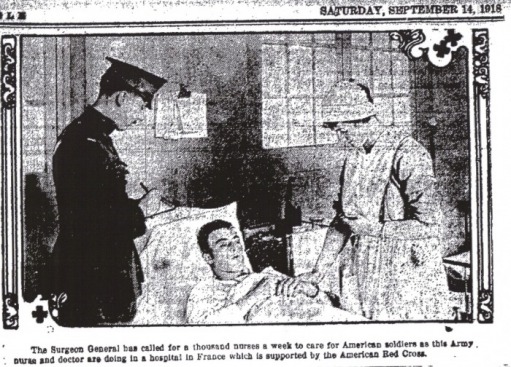American Expeditionary Forces camp hospital in Aix de Bains, France
"It is only a matter of a few hours then until death comes. . . . It is horrible. . . . We have been averaging 100 deaths per day." a quotation from a Military physician who experienced the virus first hand.
"It is only a matter of a few hours then until death comes. . . . It is horrible. . . . We have been averaging 100 deaths per day." a quotation from a Military physician who experienced the virus first hand.
Bunks on a transport ship. The virus traveled to Europe on troop ships and then spread in the trenches
Transport ships were an easy way to spread the virus as soldiers were in extremely close quarters.
Transport ships were an easy way to spread the virus as soldiers were in extremely close quarters.
A street worker displays a mask in the hopes of preventing the spread of the influenza
On September 13, 1918, the U.S. Surgeon General Rupert Blue issued a public bulletin warning the public that the flu's onset could be sudden. People could be stricken on the streets, at work in factories, shipyards, or offices. Blue advised anyone who had symptoms to go home at once, go to bed, and call a doctor immediately. Blue did not want to alarm people so he avoided giving information about the severity of the disease.
On September 13, 1918, the U.S. Surgeon General Rupert Blue issued a public bulletin warning the public that the flu's onset could be sudden. People could be stricken on the streets, at work in factories, shipyards, or offices. Blue advised anyone who had symptoms to go home at once, go to bed, and call a doctor immediately. Blue did not want to alarm people so he avoided giving information about the severity of the disease.
The tragic result of the influenza seen in Kansas. The same story was applied to Butler County. Residents were victims of the influenza as well as soldiers. As the outbreak waged war on the world it did not overlook Butler. The county lost many young citizens ranging in age from one year old to forty-nine years old. Many citizens had influenza leaving them in a weakened state which allowed pneumonia to enter their system.
World Wide Pandemic:
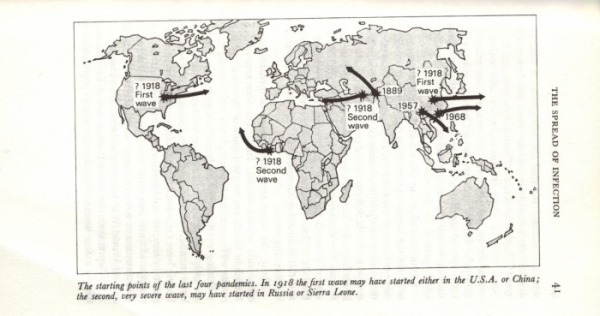
a global perspective of the Flu
The flu was extremely dangerous and disastrous for the U.S. It came as the U.S. was becoming directly involved in World War I and shaped much of the combat experienced as the influenza killed 30,000 men before leaving training camps. The men in the training camps were among the fittest in the nation. The Selective Service and local physicians examined recruits recording their height, weight, chest circumference, orthopedic, and other medical information to find the healthiest men. Around 30% of men were deemed "physically unfit" and found in some areas men suffered from Tuberculosis, venereal diseases, epilepsy, goiter, and neurasthenia (nervous exhaustion).
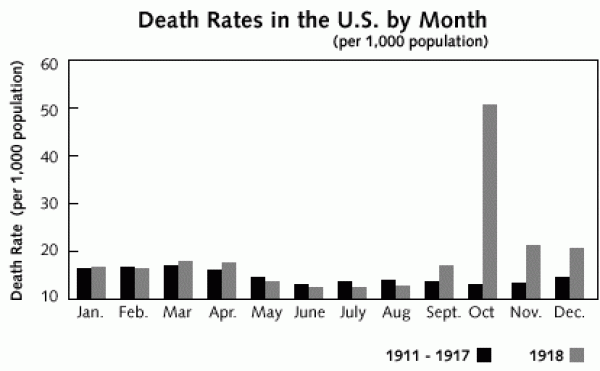
death rate of the influenza in 1918-1919
Paragraph.
